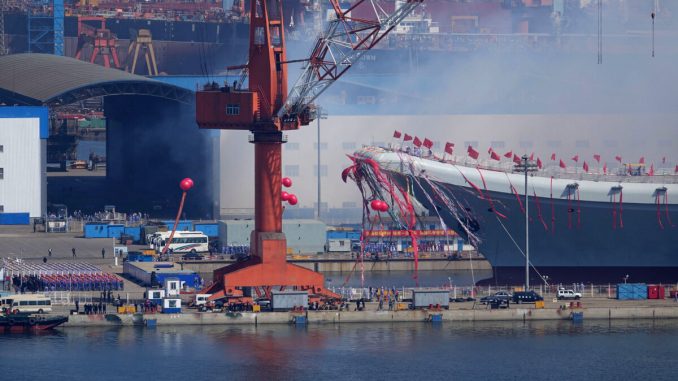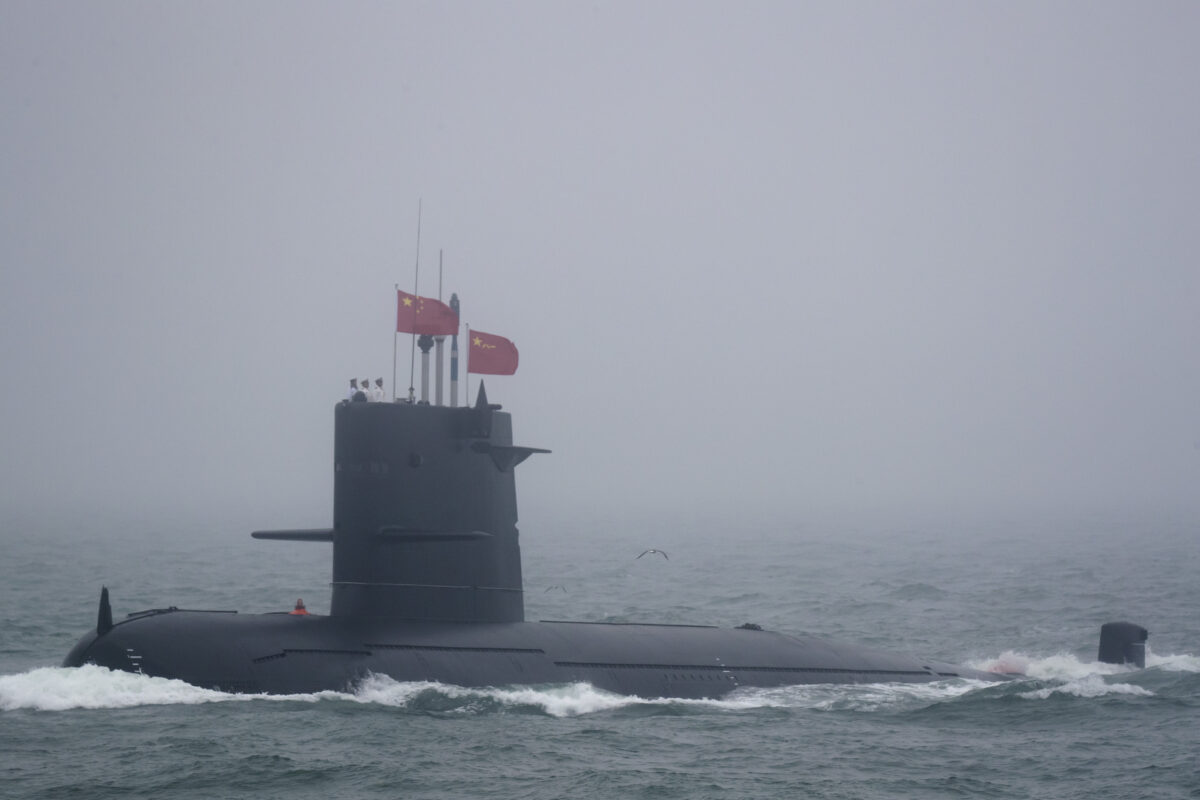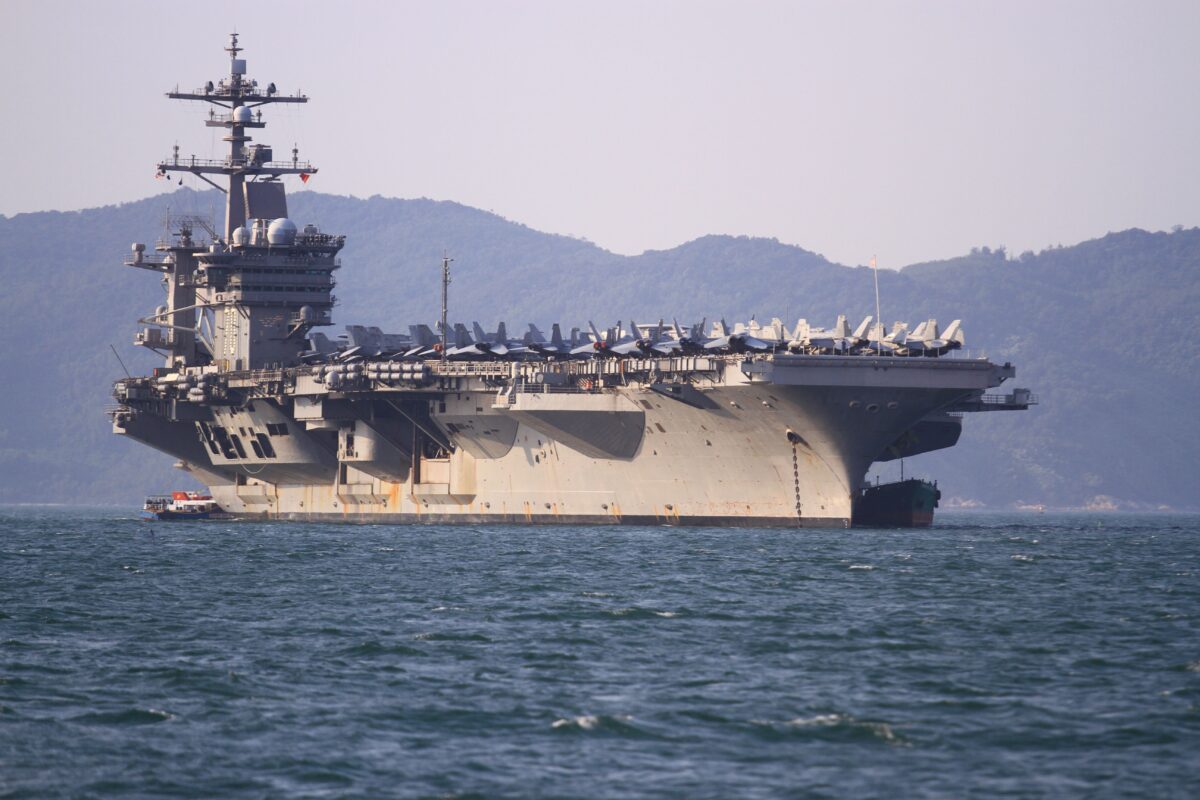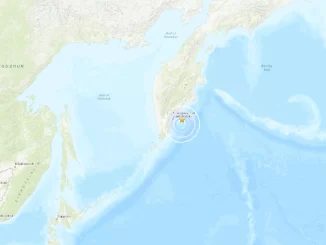
Commentary
In the first four months of 2021, the People’s Republic of China (PRC) demonstrated its continuing efforts and growing ability to dominate the high seas of the Western Pacific and, in the process, to negate the power and influence of the U.S. Navy. This change in the balance of naval power has not only destabilized the region, but threatens the safety and security of the average American.
On one day alone, April 23rd, 2021—the 72nd Anniversary of the founding of the PRC’s Navy—the self-proclaimed PRC “helmsman,” Xi Jinping, oversaw the commissioning of three new People’s Liberation Army Navy (PLAN) combatants—two warships and a submarine—at its naval base on Hainan Island.
As noted by the PLA Daily, this ceremony contained three “firsts”: “the first time that China’ top commander conferred flags to three large vessels at the same time; the first time the PLA Navy commissioned three vessels at the same time in the same day; and the first time three surface and underwater vessels were commissioned to the same naval fleet.”
The three commissioned naval combatants—the Dalian, the Hainan, and the Changzheng 18—each augment the PLAN’s warfighting capabilities in unique ways.
The 12,000-ton Chinese Naval Ship (CNS) Dalian (hull 105), a Type 055 guided-missile Renhai-class cruiser, is the most powerful cruiser on the planet today with 112 vertical launch cells for anti-ship and land-attack missiles. The Dalian is the third ship of Renhai-class and the first commissioned to the South Sea Fleet—five more are in varying stages of production and will likely all be commissioned by 2025. The Type 055 cruisers are the “shotgun” escorts for the PLAN’s new aircraft carrier strike groups (CSG) and expeditionary strike groups.
Interestingly, Xi also commissioned the 35,000-40,000-ton CNS Hainan (hull 31), a Type-075 amphibious assault ship (LHD) that is similar to the U.S. Navy’s Wasp-class LHD. The PLAN’s Type 075 LHD will be combined with the 25,000-ton Type 071 amphibious transport dock, and escorted by the Type 055 cruisers, to form the core of the PLAN’s expeditionary strike groups designed for an island-seizing mission against Taiwan and other island targets.
Lastly, Xi commissioned the PLAN’s fourth operational Type 094 Jin-class nuclear-powered ballistic missile submarine (SSBN), the Changzheng 18 (hull 421). Armed with 12 x JL-2 intercontinental ballistic missiles (ICBM), when on patrol within the waters of the western Pacific Ocean, the Changzheng 18 will provide the Chinese Communist Party a nuclear strike capability against America. Six Jin-class SSBNs are expected in total, to be followed by the newest PLAN SSBN, the Type 096, which will be equipped with at least 12 x JL-3 ICBMs that will have a range of over 6,200 miles and be equipped with multiple, independent re-entry vehicles.

As noted by Nicholas J. Myers, president of the War vs. Peace Foundation, these three commissioning are the 12th, 13th and 14th ships to be commissioned by the PLAN in calendar year 2021, compared to just one for the U.S. Navy (the USS Oakland LCS 24) for the same time-period. Yes, 14 to 1, and the United States is only expected to commission seven ships for all of 2021—half of what the PLAN has already launched.
This pattern of the PLAN outproducing and commissioning the U.S. Navy has been going on for the past decade. It is why last year, for the first time ever, the U.S. Department of Defense acknowledged the PLAN was the largest navy on the planet. Based on all evidence, the gap between the size of the PLAN and U.S. Navy is expected to continue to grow throughout the next two decades, by the end of which the size of the PLAN will be some 550 warships and submarines.
“Experts” in Washington like to dismiss the importance of counting the numbers of warships and submarines. But what the commissioning event on the 23rd of April clearly demonstrates is that the PRC isn’t just making more hulls, it is also outproducing the U.S. Navy in tonnage (size) of its ships, as well as in the number of battle force missiles—arguably the most important metric when it comes to pure naval power.
In addition to increasing its numbers of ships, the PLAN has also been very busy operating its warships at sea. For instance, in early April, for the first time ever, the PLAN dispatched a six-ship CSG to the South China Sea. Led by its first operational aircraft carrier, Liaoning, this deployment was also the first time a Type 055 cruiser had escorted a PLAN aircraft carrier. Before heading into the South China Sea, the Liaoning CSG operated off the east coast of Taiwan, providing another example of the level of effort the PLA will use against Taiwan in an invasion scenario.
Interestingly, following the Liaoning CSGs operations off Taiwan and in the South China Sea, the PLAN’s second aircraft carrier, Shandong, deployed with its carrier strike group to the South China Sea as well. This back-to-back deployment of PLAN carrier strike groups to the South China Sea demonstrates the commitment and ability of the PLAN to dominate the waters of the First Island Chain and thus drive out the U.S. Navy and reduce the region’s trust and confidence in the United States.
There have been other displays of PLAN power in these first four months of 2021. For instance, Type 022 fast attack patrol boats chasing Philippine reporters out of their own waters and amphibious assault exercises across the strait from Taiwan. Given the very public increase in PLAN commissioning, capabilities, and operations, what is most hard to comprehend is the lack of urgency in Washington to address this growing gap in naval power.
Despite two decades of PLAN modernization, U.S. Navy leaders are once again debating what it means for the United States to be a maritime nation, what the role of sea power is in U.S. national security, and what kind of force structure is necessary. While the debates continue and the PLAN keeps growing, one wonders if anyone in Washington DC really cares?

If “everything is infrastructure,” as famously stated by Sen. Kirsten Gillibrand (D-N.Y.), then will the U.S. Navy get any share of the trillions that are being proposed for spending by this current administration? If not, then it is entirely possible the PLAN, not the U.S. Navy, will be ruling the seven seas before long.
Jim Fanell, a retired U.S. Navy captain, is currently a government fellow at the Geneva Centre for Security Policy in Switzerland, and a former director of intelligence and information operations for the U.S. Pacific Fleet. His nearly 30-year career as a naval intelligence officer spanned an unprecedented series of afloat and ashore assignments across the Indo-Pacific, specializing in the People’s Republic of China’s navy and its operations. A recognized international public speaker and accomplished writer, Fanell also is the creator and manager of the Indo-Pacific Security forum Red Star Rising/Risen.
Views expressed in this article are the opinions of the author and do not necessarily reflect the views of The Epoch Times.






Be the first to comment